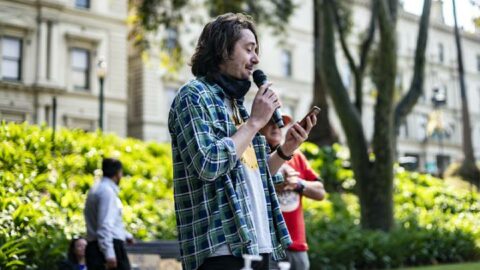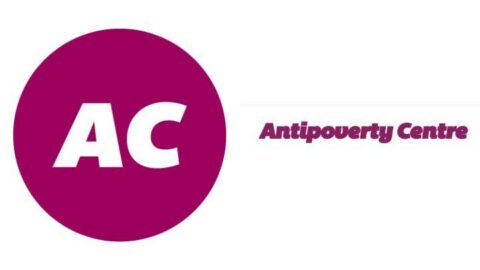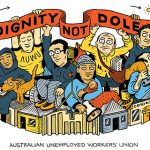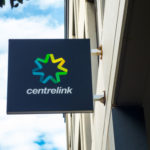Albanese Won’t Lift the Unemployed Above the Line, Says Antipoverty Centre’s Jay Coonan

On rising to the top ministerial role in the country, Anthony Albanese has shone a light on the fact that he’s managed to achieve this height whilst growing up as the “son of a single mum who was a disability pensioner” in public housing.
The Antipoverty Centre, however, is suggesting that it’s unfair of the current PM to have placed such an emphasis on his welfare roots when his government has no plans to fix the social security system, which, in having afforded him such opportunities, is failing to do the same for those now on benefit.
As of April, there were 816,767 Australians on the JobSeeker allowance. And this sizable portion of the populace continues to be forced to survive at way below the poverty line, despite the government having practically shown over the pandemic that raising them above it is easy to do.
As of December last year, the official poverty line for sat at $609 a week for a single adult. During the first months of the pandemic, when many more were unemployed, the government hiked the payment rate to the poverty line, before incrementally dropping recipients back down below it.
A political punching bag
Today, the JobSeeker allowance sits at $321.35 a week, which reflects the $25 weekly raise the Morrison government bestowed upon recipients in March last year, as well as a slight rise due to indexation. So, the unemployed are currently expected to cover all costs on $45.90 a day.
The last time there was a real increase to the dole prior to last year’s measly $50 a fortnight, was way back in March 1994 under the Keating government.
Indeed, with the mid-90s coming of Howard, along with the rollout of Centrelink and its related job network, the unemployed have increasingly become a demonised sector of society, with a good kicking of those out of work, being a cheap way for MPs to score political points.
And while once it was expected that an incoming Labor government would indicate some relief for those who can’t find a job, these days, the centre of politics has shifted so far to right that the best the unemployed can hope for is that random drug testing those on the dole isn’t flagged again.
Ever-tightening welfare
Part of the 1990s crunch on the unemployed was the introduction of privatised job agencies and mutual obligations, which has meant that those on the dole have to jump through an increasing number of hoops to secure payments, often to the detriment of their ability to adequately look for work.
The current jobactive network is to be replaced by Workforce Australia in July, which will transform mutual obligations into an online points based system that will require a recipient to accumulate 100 points a month in order to ensure that their payments keep coming.
Sydney Criminal Lawyers spoke to Antipoverty Centre spokesperson Jay Coonan about the plight of those on unemployment benefits right now, the need to abolish work-for-the-dole, and what the PM could be doing to ensure those on welfare have the same opportunities that he had.
During his post-victory glow, prime minister Anthony Albanese reflected on his welfare upbringing and how it shows the success of the Australian system.
However, the Antipoverty Centre has raised issue with this saying it’s cruel of him to do so. Jay, why is your organisation critical of Albanese on this point?
For starters, the prime minister isn’t in poverty, and he hasn’t been for decades. And as prime minister, he’s committed to leading a government that will continue to starve and harm poor people.
For the nearly three decades he’s been in parliament, Albanese has accumulated investment properties and he supported and witnessed government erosion of social security.
Also, when Albanese was younger, payments were far higher, public housing was more abundant and higher education was free.
Those are some things that his government has not committed to addressing or enacting, so that’s why we’re critical of him using his history in the current context.
A single person on JobSeeker receives about $320 a week, which includes a slight post-pandemic rise. Following the initial lockdown those on benefits were briefly paid an amount comparable to the poverty line for the first time in decades.
So, what is life like for someone living on the dole right now?
It’s always worth remembering that poverty is a crisis that existed before COVID and it’s going to exist after. However, at the moment, with the economic crisis, those in poverty are being crushed.
We can’t afford to eat. And people are struggling to house themselves, as due to the constricted rental market, prices are high.
And even if people are in their homes, we are also seeing that they’re unable to heat them as a result of the cooler weather and the lack of payments.
So, people who were selecting when they could eat are now eating even less, and they’re relying on foodbanks to survive in dire situations.
This is a deepening crisis. And the current government, as mentioned before, is happy to see people fall even further.
So, what was it like for the community on welfare to be raised to the poverty line for a short period during the lockdowns?
People were stoked. They were able to afford medication that they couldn’t afford prior to COVID. They were eating regularly. They were getting ahead on bills and preparing for the cut off that was coming at some point.
People were able to survive. It’s worth pointing out that it’s not that poor people are bad with money, it’s just that they don’t have enough.
As of July, the government’s main employment services program will be replaced by a new one called Workforce Australia. This overhaul is set to affect 792,000 people, as mutual obligations become a points-based system.
There’s a lot of trepidation surrounding the incoming Workforce Australia program, why is that?
There has been no information about the changes. And when people have recently found out about them through text messages and emails, they’ve found that the system is far worse than it was before.
The department hasn’t done any widespread consultation. They spoke with a small core group of businesses, elite charities and providers about what will happen.
Basically, the department and the previous government sought to exclude people who will be subjected to the new system.
What we worry about, and what a lot of people are starting to realise, is that people are going to fall behind in this system, while the government is going to consider any resulting payment reductions as a budget saving measure.
And meanwhile, people will end up homeless and the cycle of poverty will continue, and this new system will do nothing to address it.
The Antipoverty Centre is also running the Abolish Work for the Dole campaign. Why should this long-term mandatory welfare program be brought to an end?
Whether it’s prison labour, disability enterprises or the work-for-the-dole scheme no one should be paid below the minimum wage, which is a statement the prime minister agrees with.
So, charities are avoiding paying people for their labour. Working for the dole is nothing more than a throwback to the 19th century poorhouse.
Charities who use this forced labour need to get onboard to afford people dignity.
On another level, the unemployed have served as a political punching bag for decades, despite a lot of economic models suggesting an amount of unemployment is preferable.
In your opinion, what is the role that the unemployed play in the national discourse?
Establishing poor people as criminals allows the government to enact the cruellest of policies, including the system to extract what little money these people have to put towards tax cuts for people earning over $100,000 annually and also to pump into private school subsidies.
The reality is everybody is contributing to the community, but it’s far easier to hold people back who have nothing in order to justify the cruelty you’re enacting upon them for the benefit of the rest of society.
And lastly, Jay, the situation for those on social security payments has been progressively worsening over recent decades, and a new government isn’t going to do anything to ease the plight of this sector of society.
So, what’s the answer according to the Antipoverty Centre? What changes should Albanese be implementing?
Combating poverty is a long-term issue, but what they could be doing immediately to alleviate the pressure is one, increase payments above the poverty line as no one deserves to live in poverty.
The second thing they could do is give people voluntary employment services that actually help them find a job that they can sustain or get the training to get a job. And the third is to house everyone immediately.
The standard you walk by is the standard you accept, and our politicians seem to really enjoy poverty considering they refuse to house and support people through the economic crisis and also the catastrophic climate crisis which is pending.









